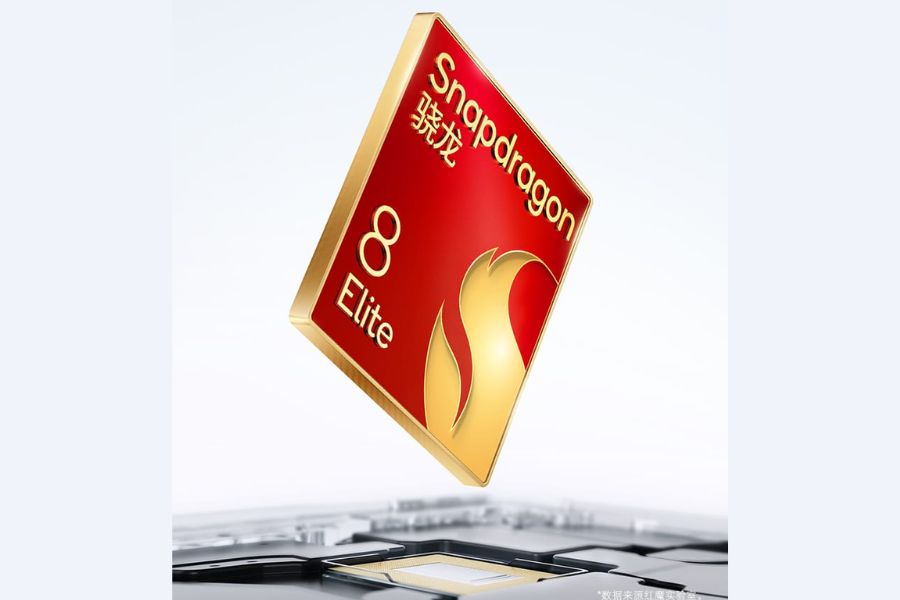Qualcomm has introduced the Snapdragon 8s Gen 4, but how does it compare with Qualcomm's flagship chipset, Snapdragon 8 Elite? While both belong to the Snapdragon 8 series, they are not exactly in the same arena. Here’s how they compare across various key aspects.
Snapdragon 8s Gen 4 vs Snapdragon 8 Elite Overview
Architecture and CPU Design

The Snapdragon 8s Gen 4 features a 1+3+2+2 CPU layout using ARM Cortex cores, including a powerful Cortex-X4. It’s built on a 4nm process, aiming to balance performance with power efficiency. The 8s Gen 4 reaches a peak clock speed of 3.21 GHz. The 8 Elite pushes this further, with its prime core clocked at 4.32 GHz.
On the other hand, the Snapdragon 8 Elite uses Qualcomm’s custom Oryon cores arranged in a 2+6 configuration. It’s manufactured on a more advanced 3nm node, offering better performance and energy efficiency.
CPU Performance
In terms of benchmarks, the 8 Elite scores around 3,200 points in single-core and 10,000 in multi-core on Geekbench. The 8s Gen 4 is expected to hit about 2,000 and 6,500 respectively. That makes the Elite roughly 50% faster in raw CPU performance. The 8s Gen 4 is expected to score around 2 million on AnTuTu. The 8 Elite surpasses it with scores close to 2.8 million, reflecting its premium-tier performance.

The 8s Gen 4 includes the Adreno 825 GPU, which supports ray tracing and up to 144Hz refresh rates. The 8 Elite goes further with the Adreno 830, offering a new sliced architecture that improves graphics rendering. It supports features like Nanite and Lumen from Unreal Engine 5. On AnTuTu GPU scores, it reaches around 1.2 million, compared to 700k–800k for the 8s Gen 4.
AI Capabilities
Both chips support on-device AI tasks. The 8s Gen 4 can handle models up to 10 billion parameters. The 8 Elite is built to handle larger, faster multimodal models and is optimized for advanced tools like Gemini Nano. It offers better performance for generative AI, language models, and complex tasks.
Camera and Imaging
The 8s Gen 4 supports up to 200MP sensors and can shoot 4K at 60fps. It includes a triple 18-bit ISP for solid photo and video quality. The 8 Elite supports up to 320MP cameras, 8K video at 60fps, real-time object removal, and HDR fusion. Its ISP processes image data 33% faster than the 8s Gen 4, delivering better results in photography.
Connectivity
The 8s Gen 4 is equipped with the Snapdragon X70 modem, offering 5G speeds up to 5Gbps. It also supports Wi-Fi 7 and Bluetooth 5.4 The 8 Elite comes with the X80 modem, doubling the 5G speed to 10Gbps. It also adds satellite connectivity, Ultra Wideband (UWB), Wi-Fi 7, and Bluetooth 6.0.
Both chips support UFS 4.0 storage. The 8s Gen 4 supports LPDDR5X RAM at 4200 MHz, while the 8 Elite supports faster 5300 MHz RAM, improving multitasking and data speeds.
Battery Efficiency
Thanks to its 4nm design, the 8s Gen 4 is efficient for upper mid-range phones. However, the 3nm architecture and custom cores of the 8 Elite make it up to 44% more power-efficient, especially during gaming.
- Also, read
Snapdragon 8s Gen 4 vs Snapdragon 8 Elite
| Feature | Snapdragon 8s Gen 4 | Snapdragon 8 Elite |
|---|---|---|
| Process | 4nm | 3nm |
| CPU | Cortex (1+3+2+2) | Oryon (2+6) |
| GPU | Adreno 825 | Adreno 830 |
| AI | Up to 10B params | Larger, faster multimodal |
| Camera | 200MP, 4K | 320MP, 8K, object removal |
| Modem | X70, 5Gbps | X80, 10Gbps, satellite |
| RAM | 4200 MHz | 5300 MHz |
| Extra Features | — | UWB, advanced AI, better ISP |
Snapdragon 8s Gen 4 vs Snapdragon 8 Elite Availability
The Snapdragon 8s Gen 4 offers near-flagship performance for a lower price point. For eg, Xiaomi CIVI 5 Pro, Realme GT Neo 7, and the Galaxy S25 FE are on the top the line to feature the 8s Gen 4. Meanwhile, the 8 Elite brings the best of Qualcomm’s technology, setting the standard for true flagship experiences in 2025, already featuring in devices like Xiaomi 15, S25, S25 Ultra, OnePlus 13 etc.
How did we do with this article?
No Active Polls
There are currently no polls available. Check back later for new polls to participate in!
Conversation
We’d love to hear your thoughts! Let's keep it respectful and on-topic. Any inappropriate remarks may be removed. Happy commenting! Privacy Policy
Be the first to share your thoughts—start the conversation!
Latest Articles
Best Tech Deals
No deals available.
Check back later for exciting deals!
More Articles





